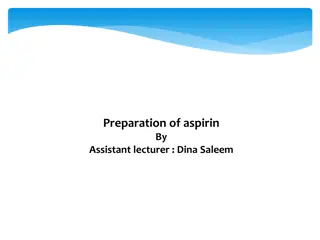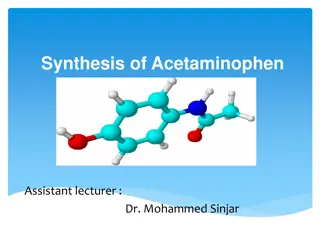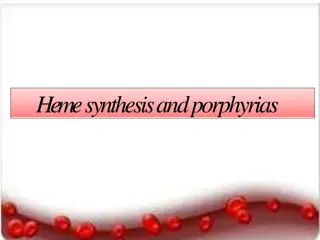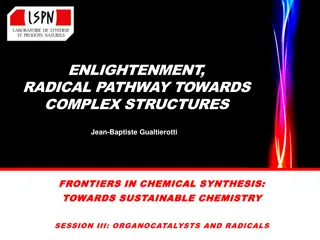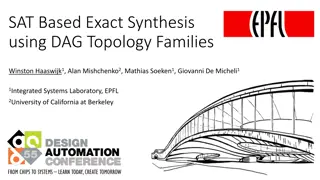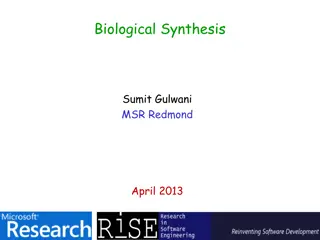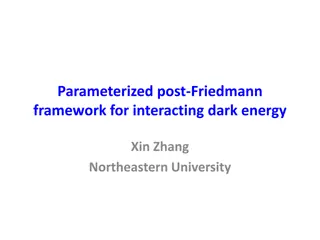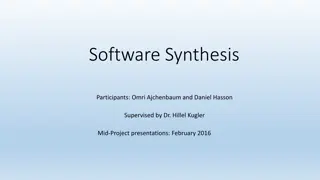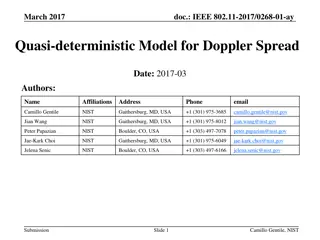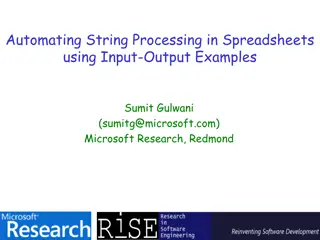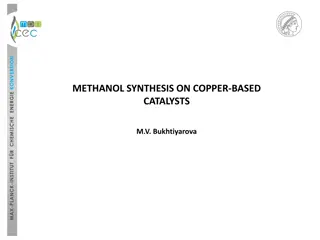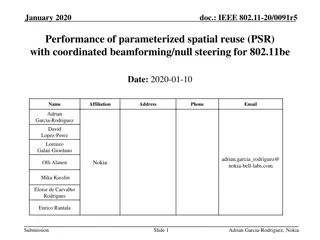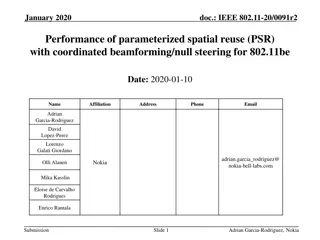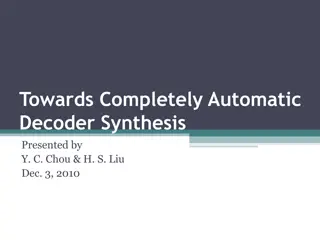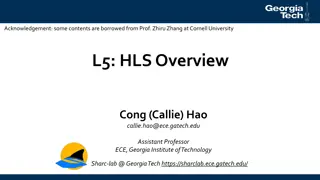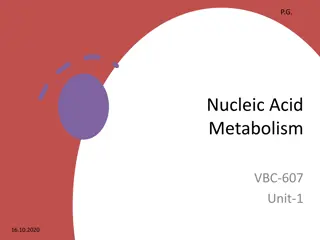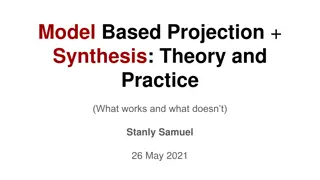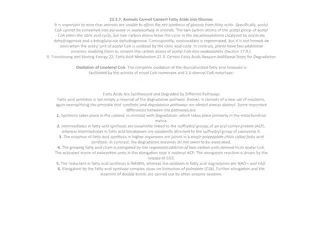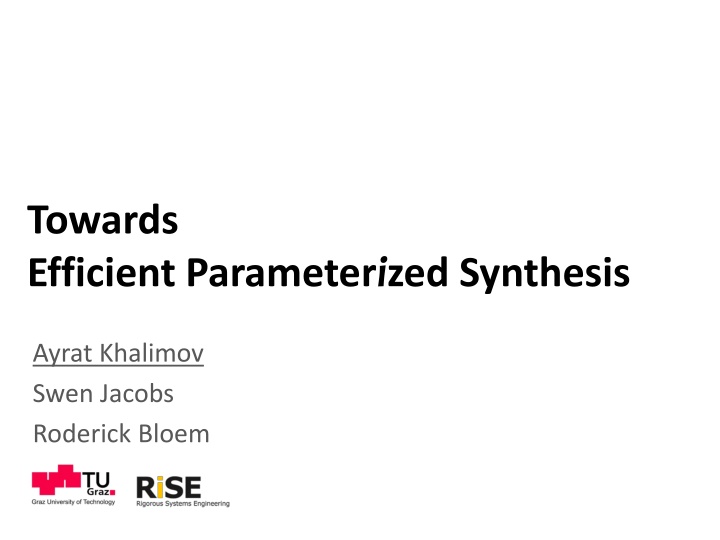
Efficient Parameterized Synthesis Methods
Explore the realm of efficient parameterized synthesis methods for reactive systems, delving into specifications, systems, architecture, and more. Dive into the complexities of the synthesis problem and discover cutting-edge solutions in this comprehensive overview.
Download Presentation

Please find below an Image/Link to download the presentation.
The content on the website is provided AS IS for your information and personal use only. It may not be sold, licensed, or shared on other websites without obtaining consent from the author. If you encounter any issues during the download, it is possible that the publisher has removed the file from their server.
You are allowed to download the files provided on this website for personal or commercial use, subject to the condition that they are used lawfully. All files are the property of their respective owners.
The content on the website is provided AS IS for your information and personal use only. It may not be sold, licensed, or shared on other websites without obtaining consent from the author.
E N D
Presentation Transcript
Towards Efficient Parameterized Synthesis Ayrat Khalimov Swen Jacobs Roderick Bloem
A reactive system is a system that responds to external events Reactive System 2
Outline 1. Preliminaries Parameterized specifications and systems Parameterized synthesis problem Method to solve parameterized synthesis problem 2. Motivation for the current work 3. The main part 4. Conclusion 5
Parameterized Specification ?? ?? ??? ?!=??(!(?? ??)) Linear Temporal Logic (LTL): G, F, X, U LTL formula over indexed variables + , separation: inputs, outputs 6
Parameterized Systems The concrete system An, scheduler, (P1, , Pn) The parameterized system is a mapping from parameter n to a concrete system with n processes: n -> An, scheduler , (P1, , Pn) 7
Parameterized Token Rings set of isomorphic processes (P1 = = Pn) scheduler: asynchronous architecture: token rings . . . 8
Parameterized Synthesis Problem Given parameterized specification , find a process implementation P /and parameterized architecture A/: An, P n for any number n of processes Undecidable /even for token rings/ => semi-decision procedures 9
Parameterized Synthesis Method [JB12] Synthesize Token Ring of cutoff size Reduce to Token Ring of cutoff size Process model LTL Cutoff reductions from verification community [EN95] Bounded synthesis approach [SF07] 10
Cutoffs in Token Rings Reasoning about Rings, E. A. Emerson, K.S. Namjoshi, 1995 Given a token ring architecture isomorphic processes specifications LTL\X of a special form then enough to verify: synthesize: (i) (i, j) (i, i+1) 11
Synthesis of Parameterized Arbiter ?!=??(!(?? ??)) ? ?? ??? (i, j) => cutoff of 4 r g 12
Adaption of Bounded Synthesis to Parameterized Synthesis [JB12, SF07] transition function Encoder output functions spec automaton architecture specific output functions SMT Solver projections ????? + constraints to specify token rings architecture 13
The Problems 1. Language Cannot handle an arbiter without spurious grants in assume-guarantee specification 2. Slow on non-trivial examples an arbiter without spurious grants cannot be synthesized in 2 hours 3. Limited architectures (future work) only token rings are supported 14
Outline 1. Preliminaries 2. Motivation for the current work 3. Language 4. Optimizations 5. Conclusion 15
Language: more indices [EN95] does not handle a -> g Verification by Network Decomposition [CTTV4]: general token passing networks any number of indices in specifications cutoff result depends on the architecture We refined [CTTV4]: Th. For k-indexed specifications in token rings the cutoff is 2k. 16
Outline 1. Preliminaries 2. Motivation for the current work 3. Language 4. Optimizations Optimizations of encoding General optimizations 5. Conclusion 17
Optimizations of Encoding Original Proposed Top-Down Approach [JB12] Bottom-Up Approach Use constraints to specify the system of components Compose the system from the components Global: Global: state t transition ta state (s1,s2,s3) transition (tau,tau,tau) tau projection functions Local s1 Local s2 Local s3 Local s1 Local s2 Local s3 out out tau 18
Evaluation of Bottom-Up Encoding Why it works? Decreases # of unknowns no projection functions. Domain of transition function tau also decreased. 19
Outline 1. Preliminaries 2. Motivation for the current work 3. Language 4. Optimizations Optimizations of encoding General optimizations Strengthening of specifications Modular synthesis Environment abstraction 5. Conclusion 20
Strengthening of Specifications Sound rewriting of the specification to make it easier for synthesis procedure. 21
Idea of Strengthening ???? ???? 1) Localizing: (???? ????) ???? ???? 2) Removing liveness assumptions: (???? ??) (???? ??) (???? ??) (?? ??) Strengthenings are sound, but incomplete 22
Localizing: in depth localization step 23
Evaluation of Strengthening Why it works? It reduces the size of specification automaton (for pnueli4 - from 1700 to 30 nodes, cutoff 6 -> 4) 24
Outline 1. Preliminaries 2. Motivation for the current work 3. Language 4. Optimizations Optimizations of encoding General optimizations Strengthening of specifications Modular Synthesis of properties Environment abstraction 5. Conclusion 25
Non-Modular Synthesis ?!=??(!(?? ??)) ?? ?? ??? ?!=?? ?? ??? ?(!(?? ??)) synthesize 26
Modular Synthesis ?!=??(!(?? ??)) ?? ?? ??? the same ?,? encode C2 encode C4 C2 C4 solve 27
Evaluation of Modular Synthesis Why it works? Parts of the specification are synthesized in smaller rings => smaller queries full4: 6MB 0.6MB pnueli4: 21MB 4MB 28
Outline 1. Preliminaries 2. Motivation for the current work 3. Language 4. Optimizations Optimizations of encoding General optimizations Strengthening of specifications Modular synthesis Environment abstraction 5. Conclusion 29
Environment Abstraction Most properties are 1-indexed To check ?? ? is equiv. to check ? 0 ? 1 Symmetry: 1) processes are isomorphic 2) initial token is randomly assigned => enough to check ? 0 ? 0 ? 1 ? 0 ?? ? 30
Environment Abstraction (cont.) Replace the second process with assumptions on its behavior ????: prev sends ???? ? 0 ? 0 async hub normal setting sync hub the process is always scheduled 31
Evaluation of Environment Abstraction Why could it work? Increases the specification (adds assumption ????), but reduces rings of size 2 to a single process. 32
General Optimizations: sum up Strengthening of specifications Modular synthesis of properties async hub abstraction sync hub abstraction C S S C S C 33
Prototype Implementation Architecture Mealy/Moore model ILTL Optimizer LTL3BA Encoder Z3 + - increase bound available at http://github.com/5nizza/Party 34
Conclusion Current work: Extends language of parameterized synthesis method Introduces optimizations leading to 103speedup Future directions: Optimize bounded synthesis approach LTL to automaton conversion is a bottleneck Utilize lazy synthesis approach [FJ12] Extend the prototype tool to a distributed synthesis 35
Thank you 36

